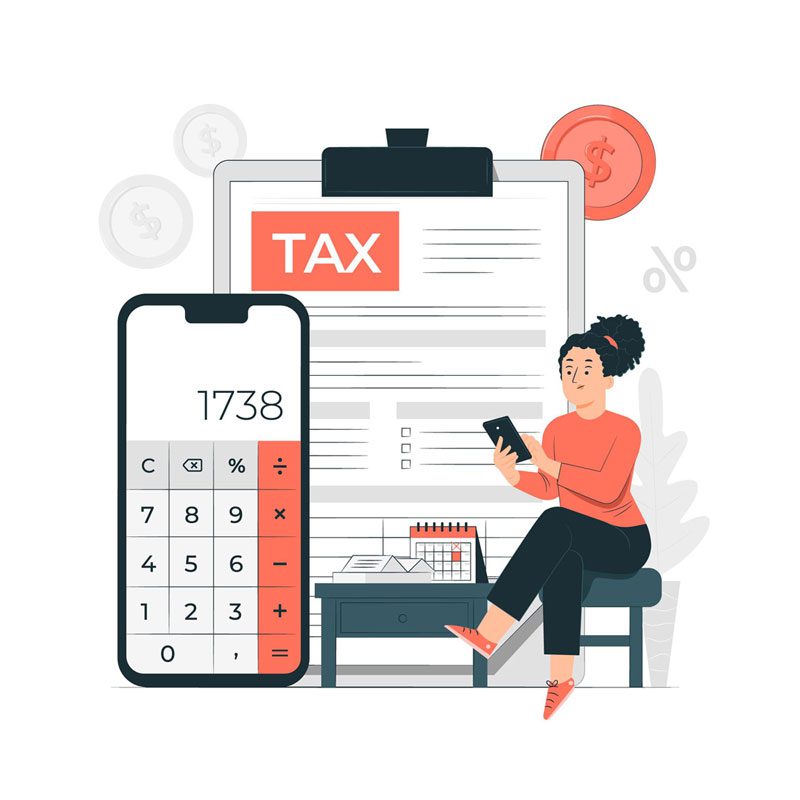Many assets lose their worth with time due to wear and tear or getting outdated. This process is described as, ‘depreciation’ and is a common term used in financial statements. Ironically, the word ‘depreciation’ seems like the antonym of “appreciate” and you’ll surely love the amount of tax relief it provides!
Still confused about what exactly does depreciation indicate, and what is the best method to calculate it? Keep reading to learn all you need to know about this!
What does depreciation mean?
Primarily, depreciation can be defined as the worth of assets decreasing over time until the asset’s worth is zero or minimal. Depreciation may occur on almost any fixed asset, particularly office supplies, computers, vehicles, and buildings. Only a property’s value, is one fixed asset not subject to depreciation, and rather grows with time.
It is important to know that depreciation impacts a firm’s most significant financial statement, namely its yearly tax responsibilities, by spreading out the economic effect of asset purchases. It has the potential to prevent profit fluctuations that might sometimes occur as a result of delaying major asset purchases.
Methods to Calculate Depreciation:
There are several ways for distributing depreciation throughout the useful life of an asset. The methods mentioned below are some of the most popular ones. Check them out, and apply as per suitability.
1. Straight-Line Method
Due to its highly efficient results, straight-line calculation of depreciation is the most commonly applied method in Singapore. A firm that uses the straight-line technique applies the same amount of the asset’s cost to every financial calculation, where applicable.
The straight-line computation for determining depreciation expenditure is:
| Depreciation per year = | Asset Cost – Salvage Value Useful life |
It works like this: you divide the price of an asset, minus its residual value, by its useful life. This influences how much depreciation you are allowed to deduct every year.
Examples:
- For instance, if a firm spends $1170 on a printer at the start of their 2016 financial year and expects it to last four years, you can divide $1170 by four to get a depreciation of $292 per year.
- Let’s suppose that an industrial business spends $600 on machinery with a service life of ten years and a residual value of $120.
Depreciation expenditure per year will be calculated as (600-120) / 10 = $50
As a result, the firm can deduct $50 as a depreciation expenditure per year for the following ten years.
2. Declining Balance Method
A declining balance method is known as an accelerated depreciation since it cuts off depreciation expenses faster while reducing the tax burden. Furthermore, even fixed assets decline at an accelerated rate instead of uniformly across the asset’s expected useful life when using the declining balance method.
This technique is frequently employed when an asset’s value is believed to be greater in its early years. Moreover, it also contributes to a greater actual gain whenever the asset is eventually sold.
Some businesses may also employ the double-declining balance technique for early cost management, which is termed as an extreme depreciation method and generally not advisable for small businesses.
Depreciation each year = Book value × Depreciation rate
Example:
Employ double the straight-line rate to compute depreciation expenditure. Assume a company owns a $1,000 asset with a residual value of $100 and a service life of five years.
To begin, determine the straight-line depreciation rate. Since the asset has a life span of 5 years, the straight-line depreciation rate will be (100% / 5) or 20% each year. Double this rate using double-declining-balance to get 40%.
Add that 40% rate to the asset’s book value while ignoring residual value. No further depreciation needs to be calculated once the book value equals the residual value.
3. Units of production depreciation
In certain situations, calculating depreciation by evaluating the asset’s work, instead of the time it serves, seems more logical. As a result, with units of production depreciation technique, the same expense rates are given to every production unit, implying that depreciation depends on output capacity instead of the number of years. To determine units of production depreciation, you must go through two stages.
- To start, determine the per-unit depreciation:
Per-Unit Depreciation = (Asset Cost – Residual Value) / Useful Life in Units of Production
- Now, depending on the actual units produced, you must compute the overall depreciation:
Total Depreciation = Per-Unit Depreciation x Units Produced
Example:
Let’s suppose you own a $50,000 machine. The residual value of the equipment is $10,000, while the depreciable base is $40,000. It has a 5-year life span and can create 100,000 units.
To calculate the depreciation rate per unit generated, divide the $40,000 depreciable base by 100,000 units to obtain 40¢ per unit. The depreciation expense would be $16,000 if the equipment generated 40,000 units during the first year of service.

